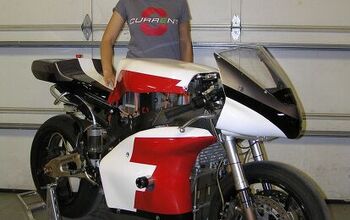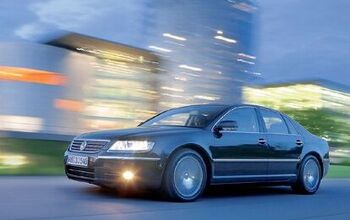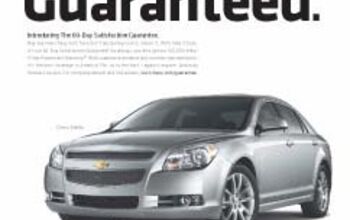Editorial: The Truth About Saturn

When I went car shopping in the early ‘90s, my priorities were fun-to-drive, reliability, and economy. Style— not so much, or so I thought. But the first time I saw a Saturn, I knew instantly what it was, although I’d never seen a photo, since the car was conspicuously absent from the ads. As soon as Consumer Reports gave Saturn a preliminary blessing for reliability, I gave it my consideration. Ultimately, I became so smitten that I didn’t bother to re-look at the Integra after I discovered to my great chagrin, in the dealer’s lot, that the turning circle was nearly as big as the namesake planet’s diameter.
Nonetheless, my Saturn, a ’93 SL2 5-speed, was a hoot to drive. Once a honking Nissan SUV tried to pace me on Cape Cod’s exceptionally scenic and winding Old County Road. He could catch me on the straights, but I lost him easily in the twisties. The Saturn steered precisely and cornered flat with virtually no understeer, aided by its low mass, less than 2500 lbs. Like the vorpal sword in Jabberwocky, the switchgear went snickersnack. The gas mileage: 35 on the road. Although a google search failed to find the quote, some reviewer, somewhere, I swear, had dubbed Saturn “the practical person’s sporty car.”
Yet, within a few years, when people asked me what I drove, I found myself apologizing for the bland… uh, brand. The first time I saw generation-2, I didn’t know whether I was looking at a Hyundai, a Tercel or an Olds. In the same way that peoples’ faces lose definition as the high cheekbones and clear jaw lines of youth disappear under the sagging skin of old age, so the Saturn’s appearance lost its sporty edge.
So did the driving dynamics. On my first drive, on a moderately hard turn which my Saturn would have taken with aplomb, the car leaned way over, and the rear let go.
What happened? My theory was that after the quasi-independent Saturn Corp. was yanked back into the Mother Company in 1994, there had been a turf war between Saturn on Pontiac over which would be the “sporty” division, a status Pontiac had claimed since the first GTO. The evidence: the ‘96 Pontiac Sunfire looked exactly like they’d taken the first gen Saturn, and tweaked the lights.
Dick Danjin, who did two stints as UAW rep in charge at Spring Hill, tells me the problem was far more general (no pun intended). In the vision of GM president Roger Smith, Saturn was to take over where NUMMI left off, teaching old, sclerotic GM all the new Japanese tricks. Collaboration rather than conflict would characterize labor-management relations. This meant, among other things, that the cars would come off of the line properly assembled (a.k.a. “first time quality”) instead of post-assembly fixes, as was the norm on Big 3 assembly lines.
According to “Comeback: The Fall & Rise of the American Automobile Industry,” GM’s $3.5b Saturn investment made it the object of jealousy among the other divisions. Indeed, the autocratic Smith had practically forced Saturn down GM’s intake manifold. With Smith’s departure in 1990, soon after launch, Saturn lost its patron.
But even during pre-launch, Smith couldn’t keep the bean counters from nickel and diming Saturn. Even after suppliers had been vetted and given contracts, accounting would enlist new ones in their quest to shave pennies per car, and quality would suffer, says Danjin.
Saturn was launched before it was ready, says Danjin, who adds that he and his original corporate counterpart, Jay Wetzel, the vice president of engineering at Saturn, had protested vainly. Brake discs warped easily, and there was an oil use problem.
Soon after his second Saturn stint began in 1994, Danjin found that first time quality was a pathetic 38.7 percent, and 300 people were working in the post-assembly fix-it shop 20/7. The quest to achieve black ink through high production was forcing levels of overtime that corroded quality. Danjin says his letters to Saturn corporate Kahuna Skip LeFauve, with carbons to his UAW boss Steve Yokich and GM president Jack Smith (no relation to Roger) barely boosted first time quality to a lackluster 51 percent.
Bottom line: its status as corporate stepchild prevented Saturn from receiving sufficient financing to successfully launch a new car company. Once Saturn lost its quasi-independent status, it lost its way. The original Saturn sold a record 286k units in 1994, placing fifth in car sales that year. Twelve years later, five Saturn models, the Aura, Ion, and Sky automobiles, and the Outlook and Vue SUVs sold a combined total of just 240k units.
Hacks blamed the genesis of Saturn’s slide on letting the original style go stale, and lack of other models. But nearly 20 years on, the gen-1 styling still looks fresh. Had Saturn remained true to Roger Smith’s vision: an import fighter with steadily improving quality, technology, and driving dynamics, and had they kept the original’s great looks, I’d still be on Planet Six.

I'm a freelance journalist covering science, medicine, and automobiles.
More by David C. Holzman
Latest Car Reviews
Read moreLatest Product Reviews
Read moreRecent Comments
- Kwik_Shift_Pro4X Mazda CX-5 all the way.
- Spookiness The Mazda interior really is nice. I recognize the rationale for the Mazda infotainment interface design in lieu of a touch screen, but the filthy masses have spoken. As with the rotary engine, it's time to move on. To sell more cars they'll need to have touchscreens. Other carmakers have evolved beyond the iPad-screwed-on-top-the-dash look, so I'm sure Mazda can come up with something aesthetically pleasing and user-friendly. (Another quibble: I really don't need or want AWD, so I wish it wasn't forced. But again, the masses have spoken.)
- Lou_BC “We are always listening to the customer. "You sayin' the baller/gangsta types don't want Escalades on 24's that don't make vroom vroom rumbly sounds?
- AZFelix I shall fully endorse the use of autonomous cars on public roads once they have successfully completed my proposed Turing test for self driving vehicles. This test requires the successful completion of an at fault incident and accident free 24/7 driving session in Buffalo and upstate New York from October 1st until March 31st, and throughout the city of Jakarta, Indonesia for one consecutive year. Only Level 1 and Level 5 vehicles are permissible.
- Lou_BC I'd go Rav4. No Mazda dealer in my town and from what I've seen, Mazda's tend to rust.


































Comments
Join the conversation
I had a 1992 SL2, 5-speed. The transaxle broke with about 6,000 miles on the clock. Dealer replaced it with no hassles, loaner included (unheard of for a domestic, proletariat-class manufacturer at that time.) After that, the car was wonderful; for fit, finish, comfort and handling, dollar-for-dollar it might be the best car I've ever owned. (I currently drive a 2006 CTS, which I would argue is not as well put-together as that Saturn was.) Saturn was GM's last chance, and they screwed it up. A shame, really.
Another necro post on an old Saturn thread. Besides Corvairs, Saturns are near and dear to my heart. I have owned three of them and still have two, including a 20 year old first gen 1993 SW2. Thanks to the polymer body panels, the car still looks good. Not too many Corollas and Civics left around here in the rusty north from that vintage unless they've been imported from the south. The article is pretty good, though I thought the later designs still looked pretty cool, though that of course is subjective. As to handling, the suspension parts for the DOHC S-series Saturns was the same throughout production. The only difference was that tire size changed in the sedans and wagons in the second generation from 195/60x15 to 185/65x15 due to customer preference for a better ride. Handling was probably a little bit worse with those tires, though easily rectifiable by going back to the earlier size (which they continued using in the coupes throughout production). Probably the best article I've found about the demise of Saturn was this one: http://www.forbes.com/2010/03/08/saturn-gm-innovation-leadership-managing-failure.html For those who dis the S-series cars, they were reliable and durable and sold very well. Even in the third generation when the auto mags were carping on GM for rolling out the same basic car from 10 years earlier, the complaints were on panel gaps and "refinement". The car still topped the acceleration in a review by I think it was Car and Driver (where they gave the nod to the Mazda Protoge as the best compact in the group). However, the SL2 had the best acceleration and among the best gas mileage. Not bad for a 10 year old design. Many people have put hundreds of thousands of miles on them. I know of one guy who put over 880,000 miles on a base model SL on the original engine and trans without overhaul before the odometer broke and he's still going. My last Saturn, which I still have is a 2001 LW300 L-series. Nice driving car, and IMHO a very underrated one, but even as a Saturn fan, I knew that that car was really the beginning of the end for Saturn. By that time the UAW partnership was scrapped, the car, though a decent one, was built off an existing GM platform with promises of more of the same, and GM bean counters failed to differentiate the L-series in an overcrowded field of excellent alternatives with established customer bases. Perhaps offering it up in a performance edition with a manual trans with the V6, or a hybrid (the only hybrids around at the time were the butt-ugly first gen Prius and the two-seater Honda Insight) to keep the green crowd paying attention to Saturn. But in the end, Saturn stopped being Saturn and whatever one says of the cars that came later (and many of those cars have their fans), the brand itself became redundant and undifferentiated.